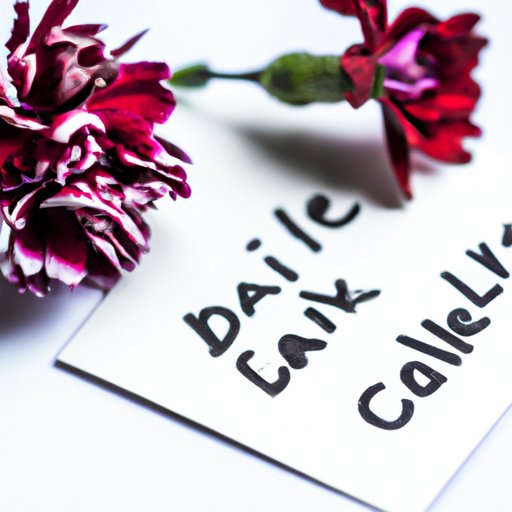Understanding Valentine’s Day: Uncovering the Story Behind the Celebration
Valentine’s Day is arguably one of the most popular holidays celebrated worldwide, especially among the younger generations. On February 14th every year, people all over the world exchange gifts, cards, chocolates, and flowers with their loved ones in honor of Saint Valentine, the patron saint of love. The holiday has seen a dramatic evolution from its origins in ancient Rome to a modern-day celebration of love, romance, and affection. In this article, we shall explore the surprising origins of Valentine’s Day, look at its customs and traditions, analyze its cultural significance, and examine the emotional impact of Valentine’s Day on couples.
The Surprising Origins of Valentine’s Day: Uncovering the Story Behind the Celebration
An early Christian martyr named Saint Valentine, who lived in 3rd century Rome, is believed to have influenced the history of Valentine’s Day. Valentine was imprisoned and executed for secretly performing weddings for Roman soldiers who were forbidden to marry. During his captivity, Valentine is said to have fallen in love with his jailer’s daughter and wrote her a letter expressing his feelings, signing it “from your Valentine.” This is thought to be the origin of modern-day Valentine’s Day cards.
Gradually, Valentine’s Day shifted from its religious connotation to a more secular holiday of love and romance. Over time, the holiday became more commercialized, with merchants selling various Valentine-themed gifts and merchandise to make a profit.
Love, Romance, and Commercialism: A Comprehensive Look at Valentine’s Day Traditions
The most common observation related to Valentine’s Day is the exchange of gifts, cards, and flowers between lovers and friends. The tradition of giving Valentine’s Day gifts has been popularized by commercial entities to promote their products. The holiday is an ideal time to express romantic love by presenting flowers, chocolates, and gifts to a significant other, accompanied by a romantic dinner or date. The day is an opportunity to celebrate your love for one another and to strengthen your relationship bonds.
While many people appreciate the grand celebration of Valentine’s Day, the commercialization of the holiday has been criticized for straining relationships and placing undue pressure on individuals to spend extravagantly on their loved ones.
Valentine’s Day Around the World: A Cultural Analysis of the Most Romantic Day of the Year
Valentine’s Day may be an accepted holiday in many countries, but the way it is celebrated differs significantly. Some countries celebrate Valentine’s Day with imported Western customs, while others have their unique traditions and way of celebrating the holiday.
In Asian cultures, while Valentine’s Day is popular among younger couples and singles, the older population may be more reserved about expressing affection. In the Philippines, the holiday is so significant that it is considered one of the country’s major holidays. On the other hand, Japanese women give chocolate to men on February 14th while men return the gesture by giving gifts on March 14th, a holiday popularly known as White Day.
The Psychology of Love: Examining the Emotional Impact of Valentine’s Day on Couples
Valentine’s Day can foster deep emotional bonds between couples, whether they have been together for a long time or are in a new relationship. Couples often experience heightened feelings of love and affection, which can result in improved communication and intimacy between partners. During the Valentine’s Day season, couples may also experience cognitive and behavioral changes, such as a stronger sense of commitment, trust, and loyalty towards each other. Research indicates that expressions of love can also have a positive effect on an individual’s mental health and wellbeing.
Valentine’s Day in the Digital Age: Exploring the Evolving Relationship Between Technology and Romance
Advancement in technology has changed the way people celebrate and express their love on Valentine’s Day. The internet provides a platform for couples experiencing long-distance relationships to connect and share experiences. Virtual celebrations and digital gifts have made it possible for couples to maintain their relationship even in challenging circumstances, such as during the COVID-19 pandemic.
However, like everything else, the use of technology on Valentine’s Day has its drawbacks. Virtual celebrations may lack the intimacy of face-to-face interactions and may lead to a feeling of dissatisfaction among some couples. Increased dependence on technology also has the potential to create a sense of disconnection in relationships.
Conclusion
In conclusion, Valentine’s Day is an ever-evolving holiday that has captured the hearts of many people worldwide. Its story begins with tales of Christian martyrdom and evolves over time to represent a modern-day celebration of love and romance. The cultural significance of Valentine’s Day varies significantly between regions and cultures, and its impact on relationships is tremendous. It is a day of love that can foster deep emotional connections, reinforce levels of commitment, and improve general mental health.
It is essential to remember that Valentine’s Day is not just about commercialism but about celebrating love and affection for one another. Small acts of kindness like spending time with your loved ones, cooking a special meal, or taking a walk together can be simple but meaningful gestures that highlight the essence of the holiday.
